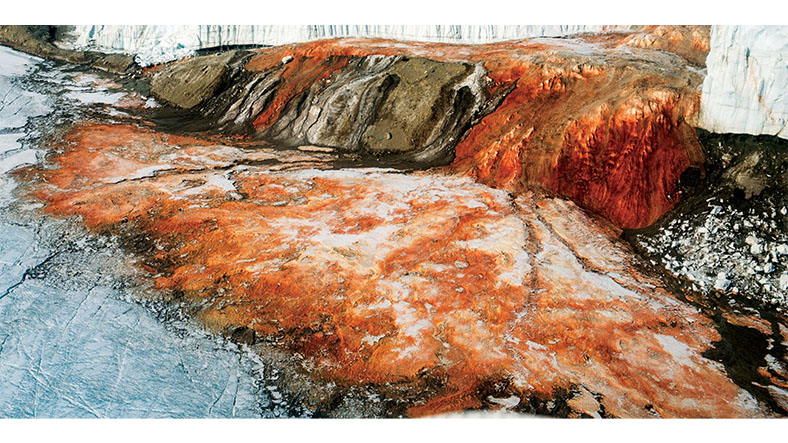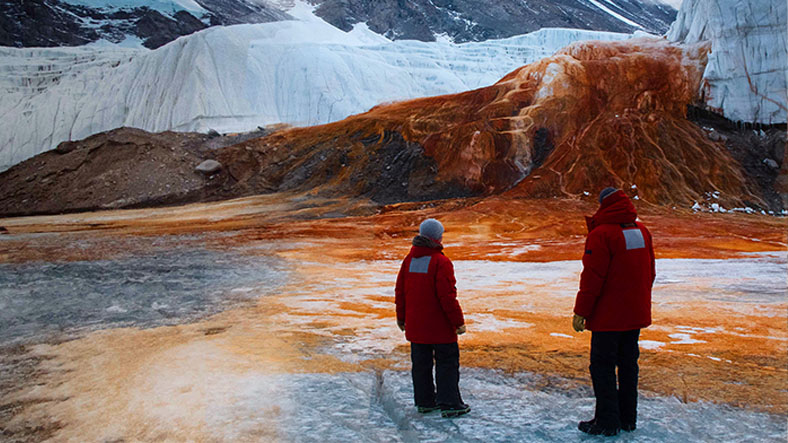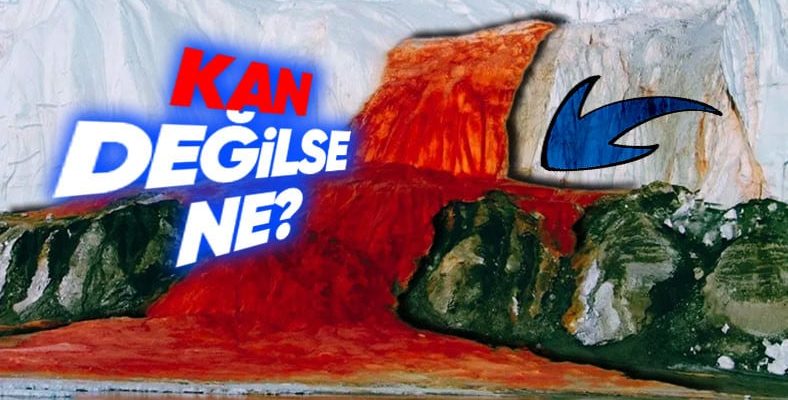An event is taking place in Antarctica that has astonished the scientific world for years. The red flowing waterfall visible among the glaciers makes everyone think why.
“Bloodfall” What is this red thing that looks like blood in this formation known as? Could there really be blood?
Do not worry, This century-old mystery has been solved in recent years. You probably can’t guess the reason even when you think about it!
“Blood Waterfall”, which takes its name from its color, looks just like blood.
of Antarctica This is a five-story waterfall located in Taylor Valley. The biggest reason why it doesn’t look like ordinary waterfalls is, as you might guess, its blood red color. So why is the color of the water flowing here really red?
For years, To understand the source of red water under glaciers Various theories have been put forward. An expedition made by a team from National Geographic solved this mystery. By scanning under the glaciers using radar, scientists discovered the existence of a complex network under the glacier: a labyrinth of subglacial rivers and lakes.
These rivers and lakes were filled with salt water with a high iron content.

The ability of this salt water not to freeze is ours. It explained the origin of the red water flowing from the bloodfall. Normally, this salt water should have frozen, but due to the high salt content and the effect of iron, its freezing point remained low. This allowed it to remain fluid under the glaciers.
But not just not freezing, Also salt waterThey also discovered that it penetrates into cracks under the glacier, causing the ice to melt. This explained to us how a continuous current formed under the glacier.
This current could be seen even in the coldest glacier.
Let’s talk about the red color of this stream. This color is entirely contained in the stream. It is due to the high amount of iron. When we look at the research, we can see that the salt content in the water increases as we get closer to the waterfalls. As you might expect, this shows that the color of the water intensifies towards the waterfalls.
When small pieces are examined under the microscope, derived from ancient microbes and rich in iron They appear to consist of nanospheres. These nanospheres were abundant in the meltwater of the Taylor Glacier.
Not only iron, but also elements such as silicon, calcium, aluminum and sodium are present in these nanospheres.

This unique combination subglacial water does not have enough oxygen for a long time, It causes it to turn red after interacting with sunlight and temperature. The fact that these structures are not crystalline has made it difficult to detect them using traditional methods.
Taylor Glacier, named after the discoverer of Blood Falls From British scientist Thomas Griffith Taylor took.
This glacier, which is estimated to have evolved in isolation for millions of years, is an ancient structure hundreds of meters below the ice. hosting microbial community doing.
Our other content about Antarctica that may interest you:
RELATED NEWS
While Uranus was discovered in 1781, how was it that the Antarctic continent was not discovered until 1820?
RELATED NEWS
Don’t Say “What’s the Matter?” Without Learning the Reason: Why Do Doctors Going to Antarctica Have Their Appendix Removed Before the Trip?
RELATED NEWS
You won’t be surprised when you find out what’s hidden under Antarctica, which is full of surprises!
RELATED NEWS
